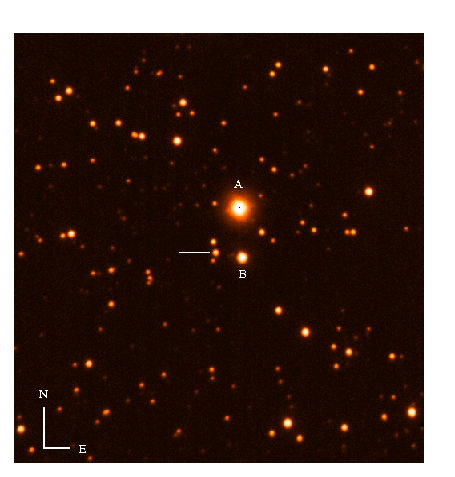
In the various papers mentioned on the previous page we detail our observations and reasons why we think that RX J1914+24 is a double degenerate polar. Recently we have obtained a series of J band images taken by Kaz Sekiguchi using the 8m SUBARU telescope in Hawaii which we show below. This is the image made from all the 5 sec exposures and totals around 1hr of data. Cool or what! Stars A (V=15.5) and B (V=17.6) are separated by 7 arc sec. The optical counterpart of RX J1914+24 (V=19.9, J=17.3) has a position of 19h 14m 26.11s +24o 56' 43.6" (2000.0) with an error of 0.4". It is consistent with the X-ray position (Ramsay et al, in prep). This image is probably one of the deepest ever images obtained in the J band. Even in the reproduction below many faint sources are visible - probably very faint stars or distant galaxies.

This page was compiled by Gavin Ramsay (gtbr@mssl.ucl.ac.uk) and last up dated on 1 Nov 1999.